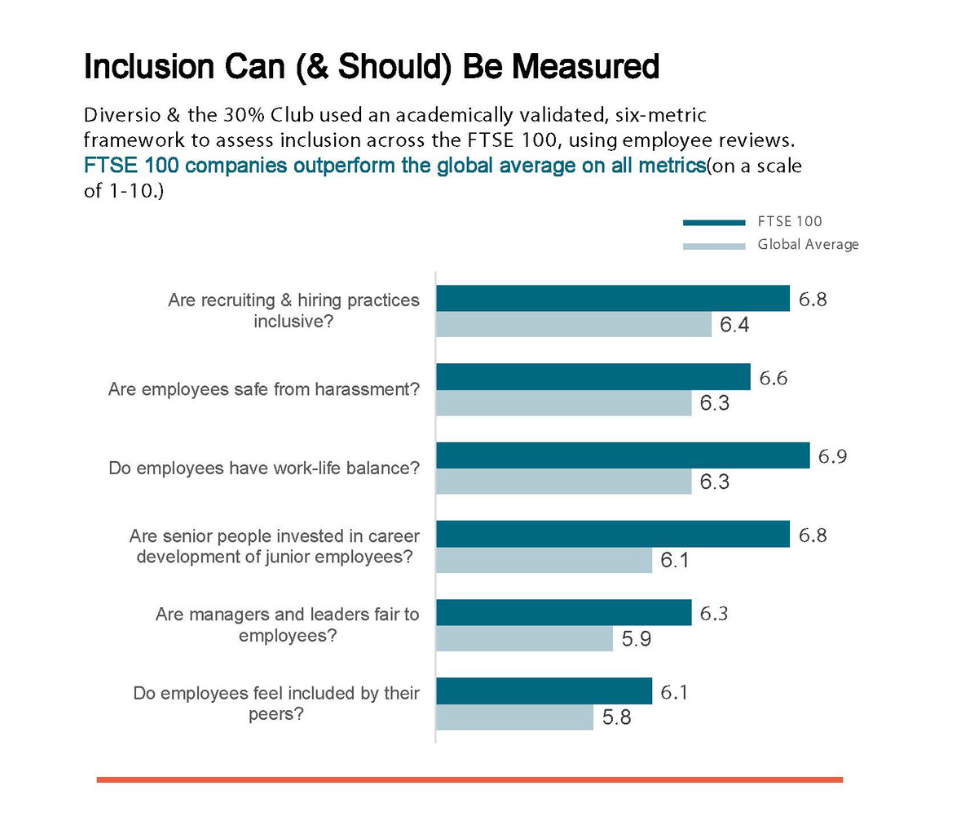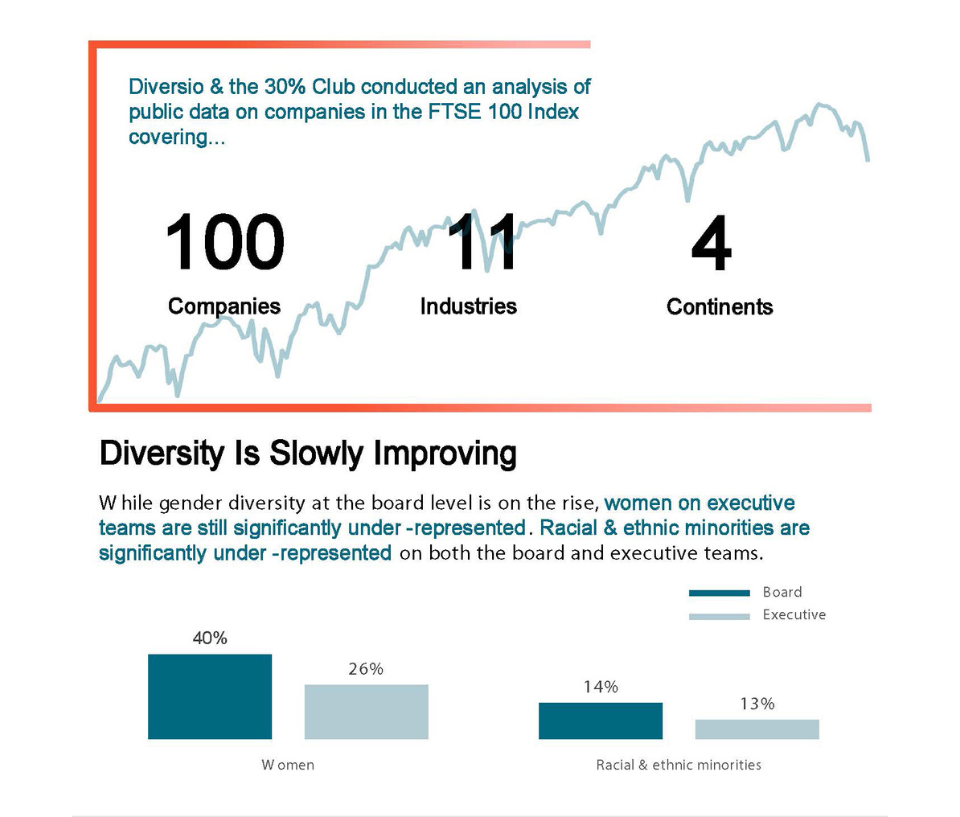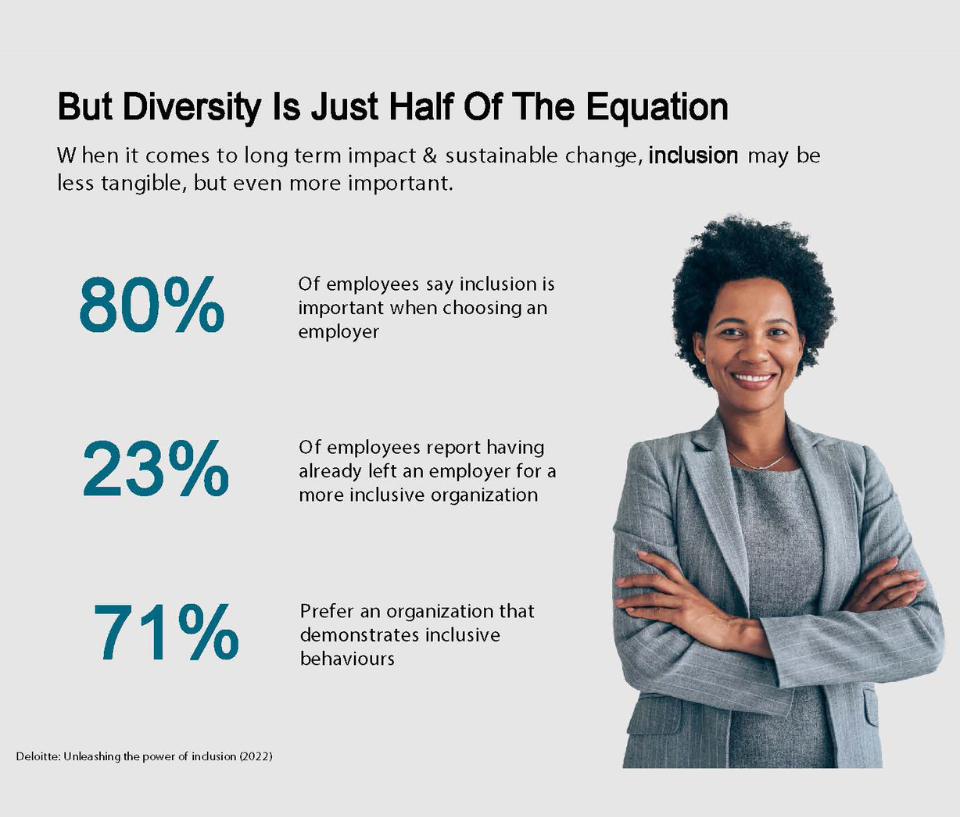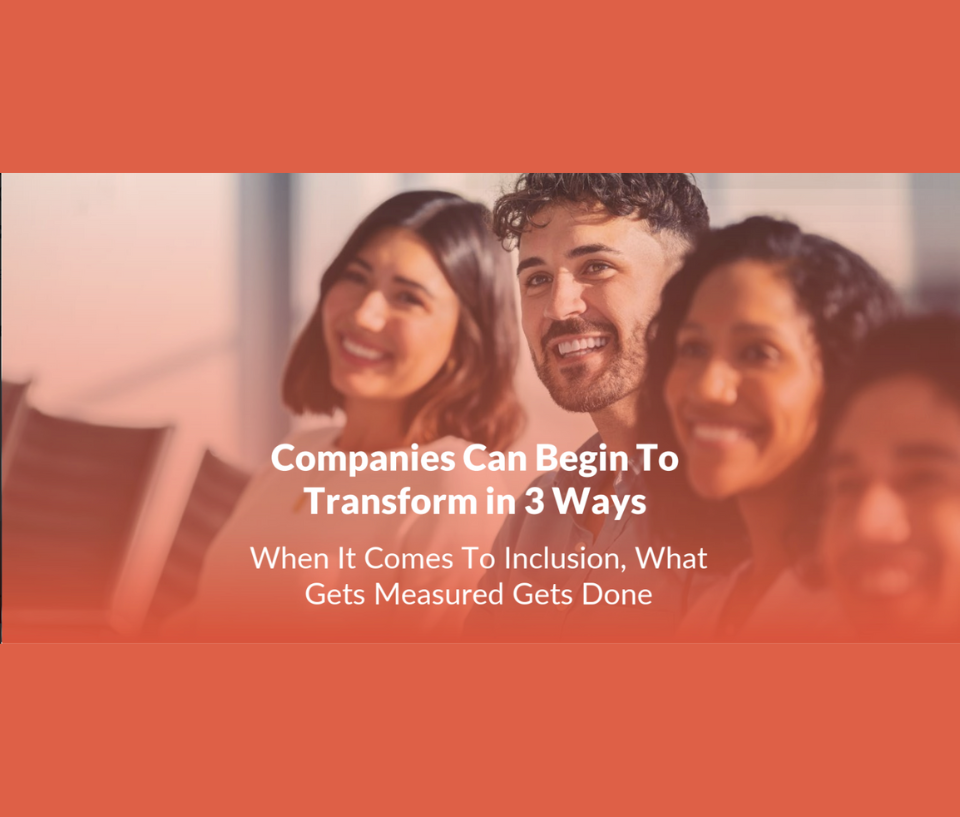
By: Diandra Soobiah, co-chair of the 30% Club UK investor group and head of responsible investment at NEST and Laura McGee, founder and CEO of Diversio.
New analysis by Diversio and the 30% Club makes one thing clear: it’s time to elevate inclusion in the conversation about diversity, equity and inclusion (DE&I). If we don’t, UK companies risk losing talent and fail to reach equal representation at the senior-most levels.
The 30% Club has a long-standing goal of driving gender diversity and has recently prioritised racial and ethnic diversity as well. The primary tactic has been advocating for more women and ethnic minorities on boards of directors, in part because these are quantifiable metric and, as the saying goes, “what gets measured gets done”.
With that said, the 30% Club has always emphasised the need for strong talent pipelines and company cultures where all employees have the opportunity to contribute and advance – in other words, equity and inclusion. Until recently, the concept of inclusion has been difficult to measure. But advances in artificial intelligence (in particular, natural language processing) have changed this, with startups like Diversio using AI to measure, track and compare organisational inclusion at scale.
Late last year, Diversio and the 30% Club’s UK Investor Group teamed up to analyse FTSE 100 companies on three DE&I-related metrics: Board and Executive diversity, DE&I programmes and policies, and the prevalence of 27 “inclusion barriers” – measured by applying artificial intelligence to employee reviews. Our goal was to identify top (and bottom) performers, uncover key drivers of bias and exclusion, and enrich the conversation about DE&I.
The results indicated that UK investors’ efforts to increase Board gender diversity appear to be working. But Board diversity is not an end in itself: the idea was always that diverse Boards would influence Executive teams and help create organizational diversity that would in turn improve performance.
Judging from our numbers, that has not occurred.


Firstly, representation at the very highest level has not trickled down. There have been great strides toward gender diversity at the board level, with an average of 40% of board seats held by women. In contrast, only 14% of board seats are held by visible minorities. Just one-quarter of Executive positions are held by women, and less than 13% are held by visible minorities.
One might argue that it will take time for a strong talent pipeline to result in promotions to senior executive roles. This assumes that workplaces are fair and unbiased with equal opportunities to advance. Unfortunately, judging from our research, this does not appear to be true of many FTSE 100 companies. We believe that an inclusive corporate culture reinforces both diversity and equity by facilitating an environment in which employees can bring their full self to work which, in turn, attracts more diverse talent as this culture becomes embedded across the organisation.
According to Diversio’s dataset, UK employees face meaningful inclusion challenges at work. Among critical employee reviews left about FTSE 100 companies, an astounding 79% cite an inclusion barrier. Too many UK employees face harassment, recourse, exclusion, and lack of mentorship at work. According to them, this is affecting their ability to do their best work and causing them to look elsewhere for employment. (If you need more evidence, this recent study by Deloitte found that 23% of employees have already left their company for a more inclusive one).
Overall, the most commonly cited inclusion barrier centered on inclusive leadership. For example, employees complained of a “very old school management style which is male, middle-age dominated”, where “domineering/bullying management styles tolerated” and the organisation is “highly political and full of silos”.


The next most prevalent barrier is adequate resourcing, for example: “Profit driven with constant cost cutting at the expense of everything”. Employees mentioned their race and gender affecting their ability to advocate for resources needed to do their jobs effectively.
The third is a lack of fairness in career development, with employees saying things like “[there are] limited promotional opportunities from within [and an] average pay Culture in upper management.” Many employees described an “old boys club” with advancement opportunities given based on who you know and what you look like.
All this begs the question – how should investors engage with companies on this topic, and where should corporate Executives begin?
The first step is to acknowledge inclusion as a material factor in the war for talent. Now more than ever, companies are struggling to retain talent with turnover at an all-time high and employees valuing culture more than ever. Companies that cultivate inclusion will have a significant advantage. Those that get it wrong face attrition and reputational harm.
The next step is to benchmark performance and measure progress. Though achieving gender and ethnic diversity at a Board level is important, if we are to make tangible progress on DE&I we must look to improve inclusivity in the work place. Inclusion can and should be measured. (Diversio has open-sourced its framework here.) Once a baseline is established, executives can start to prioritize interventions and hold leaders accountable for meeting specific targets.


The third step is to continue to engage with non-government organizations and peer groups like the 30% Club and The Network of Networks. DE&I is an evolving and nuanced topic, and every company has some room for improvement. Sharing learnings will help all involved – not just what is working, but also what is not. This requires a healthy dose of humility and openness to learn.
In summary, our goal was to create a baseline for components of DE&I like racial and ethnic diversity, equity and inclusion. Our analysis provides a good foundation for improvement – if executives and investors seize the opportunity. We hope they do.

